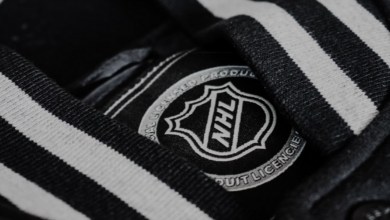Throwback Thursdays – 11/22/18
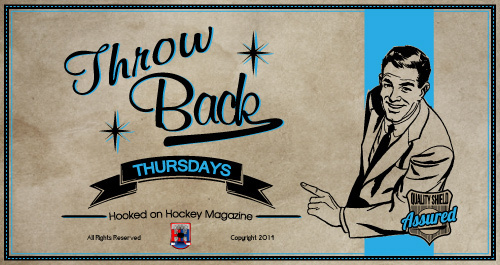
Welcome to our new-ish segment – the creatively titled Throwback Thursdays.
Hey, don’t take it up with me – the boss wasn’t feeling “Iggy with it” when it came to naming this segment.
Anyways, that’s in the past (sort of the whole point of these kinds of articles). The future is bright. Hockey’s young stars are shining brighter than ever before and for the most part, fans are loving it (except for my 70-year-old neighbor who mentioned hockey is too violent now and wished it was more like the 70s…. OK then, bud).
The history of hockey is a little murkier however; there were no instant gratification stories. No live-tweeting or streaming of events and, back when celebrities were highly respected, we didn’t try to invade every aspect of their personal life.
Alas, I’m not here to give you the proverbial dirt; I want to dig through the dirt and search through the clutter to get you fun facts of hockey’s past.
Before this article devolves into a ramble – I feel that automatically means I’ll need to write my “Why I’ve Joined the Athletic” article next (for the record – I love The Athletic and am a subscriber and avid reader) (EDITOR’S NOTE: This article is not sponsored by The Athletic, but you should check them out anyway).
For my first article, I’m going to dig into the first-ever professional hockey league. The International Hockey League.
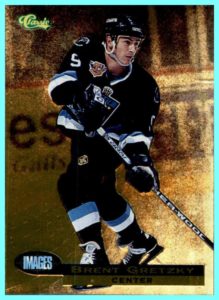
Not that one.
The International Professional Hockey League (IPHL) was the brainchild of Dr. John L. “Jack” Gibson. Founded a whole 13 years before the NHL was started, The IPHL got its start when Gibson felt the ire of the Ontario Hockey Association (OHA) in 1902. While playing for the local Berlin, Ontario team (Berlin is now known as Kitchener, for some reason there was some Anti-German sentiments in 1916, right after World War I so Berlin was nixed pretty quickly), Gibson won his amateur league championship and the town decided to show its gratitude for their champion athletes by presenting each player with a token of appreciation: a silver dollar.
 I imagine it looked something like this.
I imagine it looked something like this.
The OHA couldn’t stand having its amateurs getting their gold doubloons…er… silver dollars and banished the team from the league. Gibson, pursuing his career ambition to be a dentist, moved to Michigan to attend the University of Detroit Dental School. After graduation, he set up his dental practice in Houghton, Michigan and also started the Portage Lake Hockey Team that dominated over the next couple of years. For context, the Hockey Hall of Fame says of this time:
“In 1903-04 the Portage Lake squad posted a 24-2 record, outscored the opposition 273-48 and caught the attention of the public. They competed against teams from St. Paul, Minnesota, St. Louis, Missouri, and Montreal. They even vanquished the famous Montreal Wanderers by scores of 8-4 and 9-2 in front of 5,000 fans at the Houghton Amphidrome.” Gibson himself scored 10 goals in 12 games in 1903-04. During this time, Gibson, along with prominent Houghton businessman James R. Dee, became aware of the huge interest in hockey in Michigan and began enticing investors to bring together the first professional teams through negotiations with the established Western Pennsylvania Hockey League. After a meeting on November 5, 1904 between businessmen from Pittsburgh, Northern Michigan and Sault Ste. Marie, The IPHL would become a five-team league that included Pittsburgh, Sault Ste. Marie (Ontario), Sault Ste. Marie (Michigan), Calumet, and Gibson’s own team, the Portage Lakes Hockey Club from Houghton. As Gibson was a renowned hockey player and all-around athlete, he attracted many pre-NHL stars to the IPHL, including one of hockey’s earliest stars – Frederick Wellington “Cyclone” Taylor – or just Cyclone Taylor as he was more widely known.
During this time, Gibson, along with prominent Houghton businessman James R. Dee, became aware of the huge interest in hockey in Michigan and began enticing investors to bring together the first professional teams through negotiations with the established Western Pennsylvania Hockey League. After a meeting on November 5, 1904 between businessmen from Pittsburgh, Northern Michigan and Sault Ste. Marie, The IPHL would become a five-team league that included Pittsburgh, Sault Ste. Marie (Ontario), Sault Ste. Marie (Michigan), Calumet, and Gibson’s own team, the Portage Lakes Hockey Club from Houghton. As Gibson was a renowned hockey player and all-around athlete, he attracted many pre-NHL stars to the IPHL, including one of hockey’s earliest stars – Frederick Wellington “Cyclone” Taylor – or just Cyclone Taylor as he was more widely known.
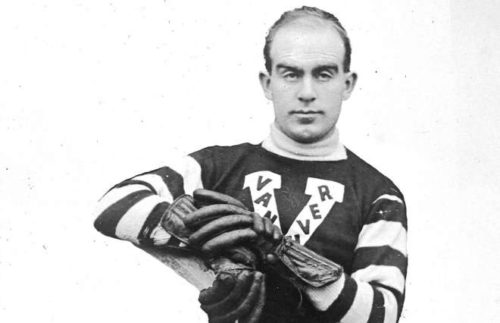
Obviously, the OHA was none-too-pleased with these developments, with Toronto philanthropist John Ross Robertson – a prominent figure in, and advocate for amateur sports – concluding that “for self preservation, the stand of the Ontario Hockey Association (OHA) against the professionalism of Pittsburgh, Houghton, Calumet and the Soo must be uncompromisingly antagonistic … Any player who figures on any of these teams must be banished from Ontario Hockey.” To understand just how important a figure Robertson was in Canadian amateur sports, bear in mind the Ontario Hockey League’s championship trophy is still named after him. The next time you complain about the amount a certain player is making, remember how far we’ve come. That’s show biz baby!

At $15 to $40 a week, the IPHL was able to provide players a chance to earn a decent wage while they played, while also providing great jobs opportunities in the communities they played thanks to the businesses involved in the teams’ operations. Specific stars were lured with lucrative contracts as well, with Cyclone Taylor himself signing for a $3,000 salary – which is now over $85,000 USD adjusted for inflation. That could almost pay for a ticket to a Leafs playoff game nowadays!
Despite the star power the league could attract, teams still had troubles icing a consistent team from season to season as most of the players returned to their off-season jobs and would often remain there. In addition to the high player turnover, the IPHL only played on natural ice, which meant that the season could only be a couple of months long.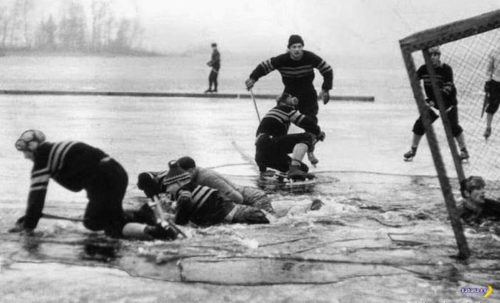 At the conclusion of the first season, the Calumet Miners were able to bring home the championship. Gibson must have felt a little bit outdone after the exploits of his team from the previous few seasons, but he went out to prove himself the following two years as Portage Lakes came home with the following two (consequently, the last two) IPHL championships. His team was so talented during those years that Gibson issued challenges for the Stanley Cup to the Ottawa Silver Seven and the Montreal Wanderers in subsequent years. In both cases, Portage Lakes were refused their challenge, as the trustees of the Cup decided only amateurs could compete for the Cup. This is how John Robertson eventually got his revenge.
At the conclusion of the first season, the Calumet Miners were able to bring home the championship. Gibson must have felt a little bit outdone after the exploits of his team from the previous few seasons, but he went out to prove himself the following two years as Portage Lakes came home with the following two (consequently, the last two) IPHL championships. His team was so talented during those years that Gibson issued challenges for the Stanley Cup to the Ottawa Silver Seven and the Montreal Wanderers in subsequent years. In both cases, Portage Lakes were refused their challenge, as the trustees of the Cup decided only amateurs could compete for the Cup. This is how John Robertson eventually got his revenge.
With no means for the IPHL teams to compete for the Stanley Cup, and as a result of the emergent popularity of Canada’s #2 National Sport (Lacrosse, Eh!) resulting in the creation of its own professional teams and leagues in 1906-07 – the IPHL found itself in dire straits. Players were heading home to Canada to play for teams closer to their hometowns, which inevitably lead to the American teams’ folding or joining newly-established leagues, like Pittsburgh and the Western Pennsylvania Hockey League.
The Houghton-based Champions, Portage Lakes Hockey Club, decided not to return after 1907, and with that came the death of the first-ever professional hockey league. Jack Gibson’s dream would live on, with many professional leagues being established in the following years and eventually the Stanley Cup would find itself a home with a professional league, the National Hockey Association (which eventually became the National Hockey League). Gibson was then able to see the Cup become a permanent professional fixture when the National Hockey League became the de-facto Stanley Cup presenter in 1926.
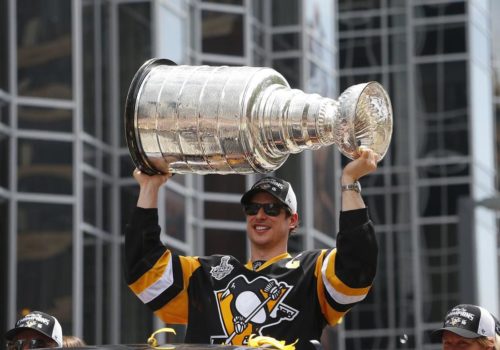
After the IPHL discontinued, Dr. Jack Gibson continued refereeing local hockey games in Houghton while operating his dental practice. He eventually moved his practice to Calgary, Alberta where he eventually retired. His legacy not only includes the start of the first professional hockey league, beating Cup champion Montreal Wanderers multiple times, and the Cup eventually becoming a permanent professional trophy – but also includes the building of legacies of 15 members of the IPHL that were eventually inducted into the Hockey Hall of Fame. This list included stars like Taylor, Newsy Lalonde, and even Dr. Gibson himself, who was inducted posthumously in 1976.

